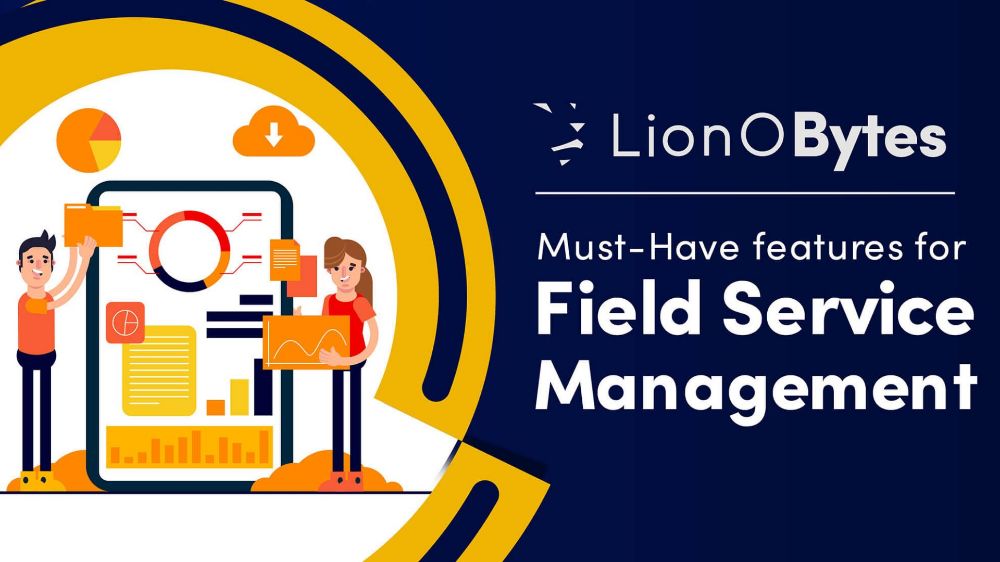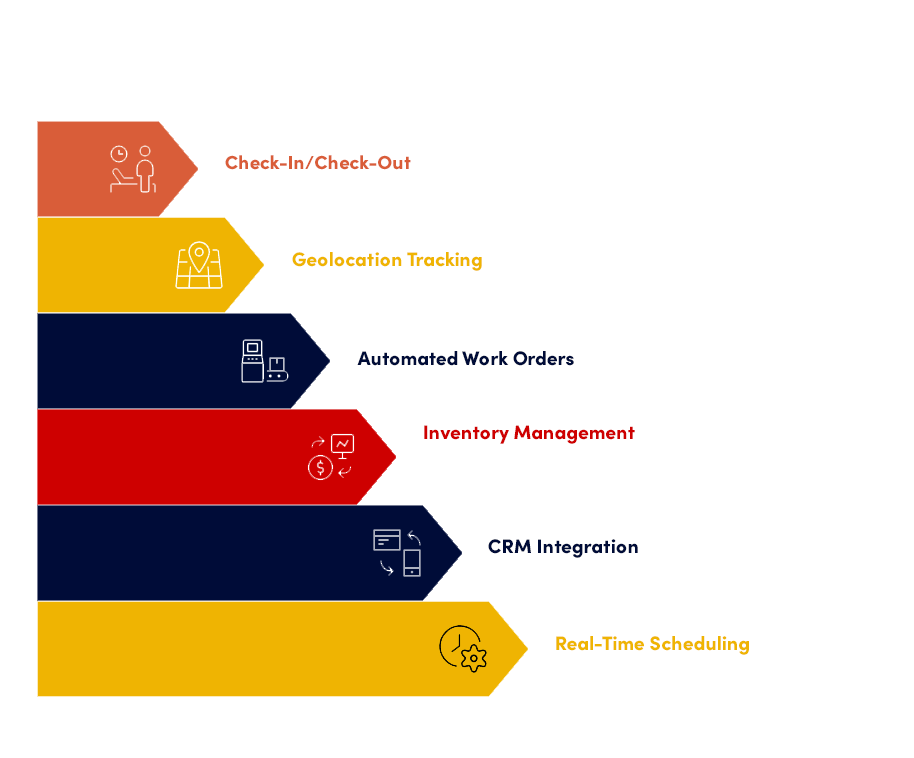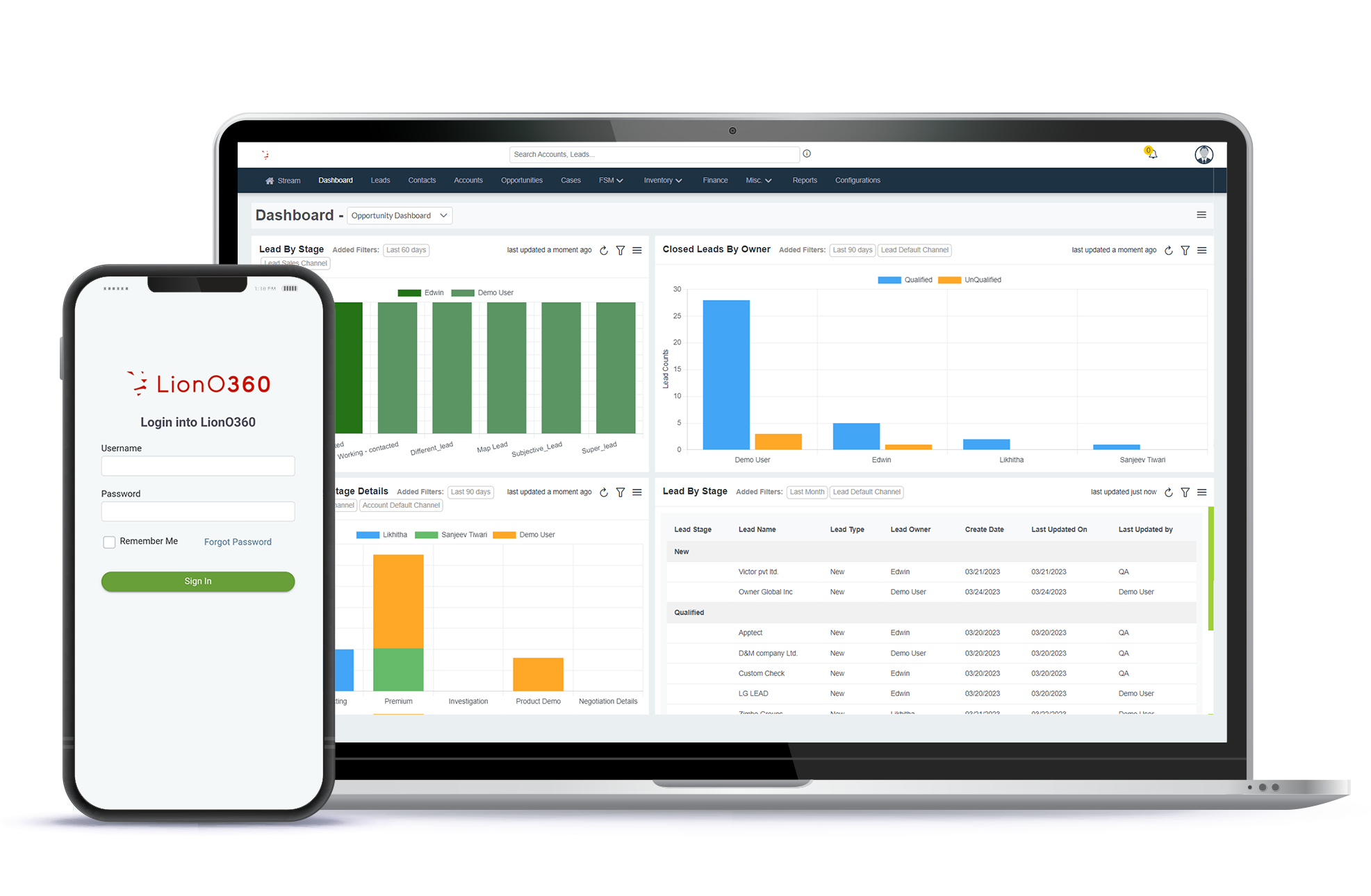
Field Service Management is a complicated and dynamic component of any business that requires on-the-groundwork. Businesses need an all-encompassing FSM solution that combines all the features discussed above to remain competitive. Not only do these features create optimized efficiencies but also generate a better overall customer experience and give the business the insight to make decisions based on facts and data.
With the right mix of features in an FSM solution, your business can increase quality in delivering services, provide service on time, and streamline processes that increase profitability and customer loyalty. As technology continues to progress, investing in a robust FSM system will set your business for growth and success in the future.
Essential Features for Field Service Management
Let's take a look at the most important features for FSM solutions that will help you manage your team efficiently, your customers are happy, and your business maintains a competitive edge.
1. Scheduling and Dispatching
Efficient scheduling and dispatching are the backbone of any field service business. Look for software that offers:
- Drag-and-drop scheduling: Easily assign jobs to technicians with a user-friendly interface.
- Automated dispatching: Automatically assign jobs based on technician availability, location, and skill set.
- Real-time updates: Keep everyone in the loop with instant updates on job assignments and changes.
2. Mobile Accessibility
Field service technicians are always on the go, so your software should be too. A mobile app or mobile-friendly platform is essential for:
- Technicians can view schedules, customer information, and job requirements on their smartphones or tablets.
- Real-time updates from the field keep the office and customers informed.
- Streamline the checkout process by allowing technicians to collect payments and signatures on-site.
3. Customer Management
Happy customers are the assets of any business. Field service software should include tools to help you manage customer relationships effectively:
- Store important details like contact information, service history, and preferences.
- Send automated appointment reminders, follow-ups, and service updates.
- Gather customer feedback to improve your services and build loyalty.
4. Inventory Management
For businesses that rely on parts and equipment, inventory management is crucial. Look for software that allows you to:
- Track inventory levels: Know what’s in stock and what needs to be reordered.
- Manage parts usage: Track which parts are used for each job to ensure accurate billing and inventory control.
- Integrate with suppliers: Automate reordering processes to avoid stockouts.
5. Invoicing and Payment Processing
Streamlining the billing process is essential for maintaining cash flow and keeping customers satisfied. Key features to look for include:
- Customizable invoices: Create professional invoices that reflect your brand.
- Online payments: Allow customers to pay via credit card, ACH, or other digital methods.
- Integration with accounting software: Sync data with tools like QuickBooks or Xero for seamless financial management.

6. Reporting and Analytics
Data-driven decision-making is critical for businesses. Field service software should provide:
- Analyze key metrics like job completion rates, technician performance, and revenue.
- Get a snapshot of your business’s performance immediately.
- Identify patterns and make informed decisions to optimize operations.
7. Integration Capabilities
Your field service software shouldn’t operate in a silo. Look for solutions that integrate with other tools you use, such as:
- Sync customer data for a unified view of your interactions.
- Simplify financial management with seamless data transfer.
- Automated follow-ups and promotional campaigns.
8. Route Optimization
For businesses with multiple technicians on the road, route optimization can save time and fuel by lead tracking software. Key features include:
- Monitor technician locations in real time.
- Automatically calculate the fastest routes based on traffic and job locations.
- Set up virtual boundaries to receive alerts when technicians enter or leave specific areas.
- Route optimization helps reduce travel time and fuel costs, improving overall efficiency.
9. Customization Options
Every business is unique, so your software should be able to adapt to your specific needs. Look for:
- Create custom software to capture the data that matters most to your business.
- Create custom workflows to streamline repetitive tasks.
- Add your logo and colors to invoices, reports, and customer communications.
10. Scalability
As your business grows, your software should grow with you. Choose a solution that:
- Accommodate more technicians, jobs, and customers without compromising performance.
- Scale up or down based on your needs.
- Add functionality as your business evolves.
LionO360 FSM: Streamlining Operations for Success

LionO360 Field Service Management solutions provide an introduction to a flexible platform that can improve processes, resources, and outcomes for any sized enterprise. LionO360 FSM completes the application of modern technology and intelligent automation for the organization to relaunch their field operations into a well-functioning system for productivity, economically, and for customer satisfaction.
LionO360 FSM is more than a field service management system; it is a strategic partner in your journey towards operational excellence and viability of your business. By automating workflow, providing real-time data, and enhancing customer interaction, LionO360 FSM creates the opportunity to demonstrate efficiencies, decrease costs and meet operational results. Whether your objective is to capitalize on field teams' performance, advance customer satisfaction, or understand depth of capability, LionO360 FSM provides the solution to the operational efficiencies and desirability of results.
To book a free CRM demo, visit us or contact our teams.
Frequently Asked Questions
What is the best field service software to use for a small business?
A business needs personalized field management service software to run their processes smoothly. The platform provides customer satisfaction by offering scheduling, dispatching, work order management, and so on. Here are some of them:
- LionO360 FSM
- Microsoft Dynamics 365 Field Service
- Zuper FSM
- Salesforce Field Services
- Jobber
- Freshdesk
What is real-time scheduling and dispatching in Field Service Management?
Real-time scheduling and dispatching refer to tools that allow service managers to efficiently assign jobs to technicians, ensuring that the right person is dispatched to the right location at the right time. This feature minimizes downtime, optimizes routes, and allows for quick adjustments to schedules in response to emergencies or cancellations.
How does mobile access benefit field technicians?
Mobile access gives field technicians mobile access to the most recent information. It enables field technicians to access work orders, customer history, enter a log of work for the day and even take payments or signatures in the field. Mobile access improves communication, timely information updates, and productivity.
What are the benefits of having an inventory management feature in FSM software?
Features of inventory management ensure that technicians go to the service site with the right parts and tools. The benefits of inventory management also include reduced time in the field identifying parts, cost savings through real-time inventory management to prevent overstocking, and centralized control to synchronize the field and warehouse operations.Features of inventory management ensure that technicians go to the service site with the right parts and tools. The benefits of inventory management also include reduced time in the field identifying parts, cost savings through real-time inventory management to prevent overstocking, and centralized control to synchronize the field and warehouse operations.
How do automated work orders and invoicing improve field service operations?
The automation of work orders and invoicing increases workflow efficiency and improves accuracy by minimizing human errors. It enables faster payments as invoices can be sent immediately after the service is completed, and overall, simplifies the workflow for back-office staff, allowing them to concentrate on more critical and strategic work instead of doing entry-level type work by hand.












